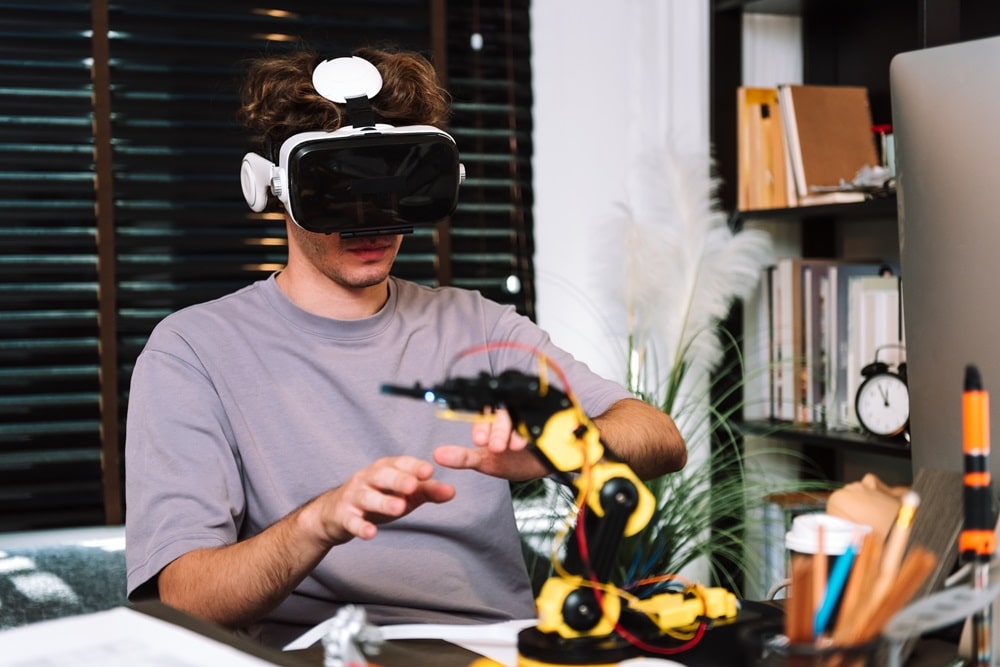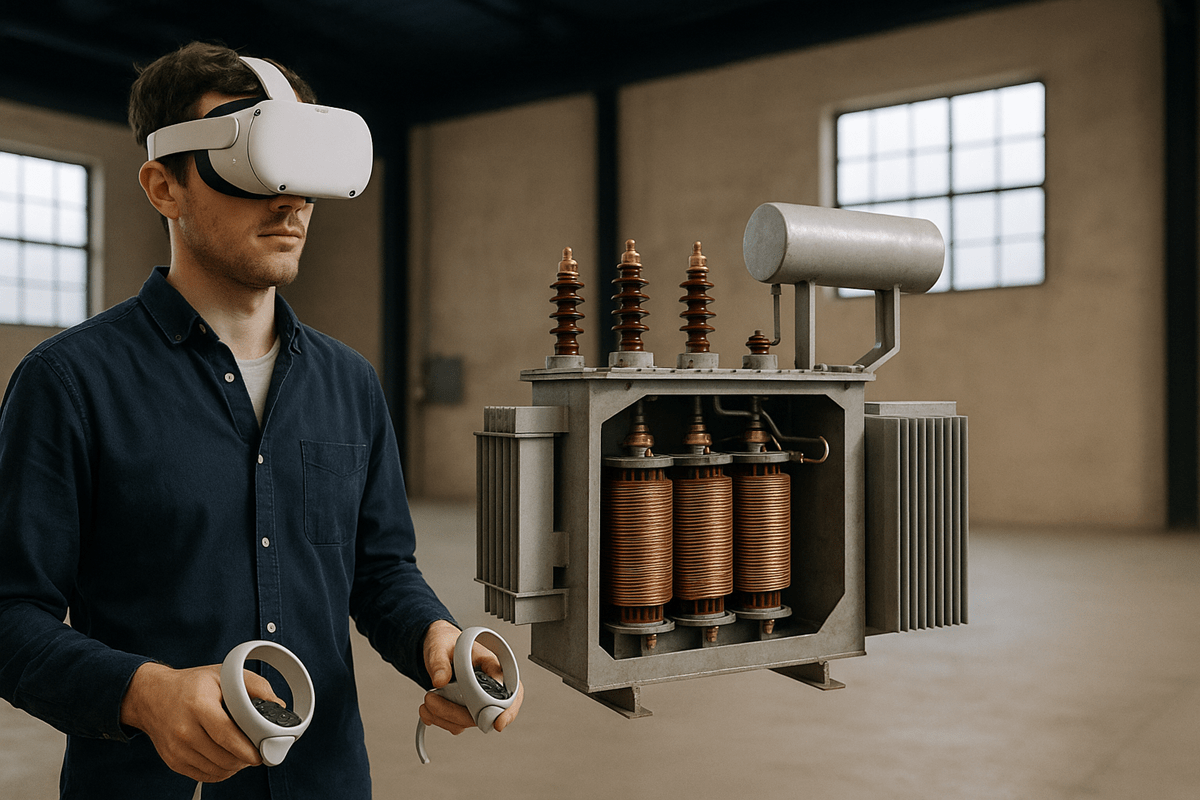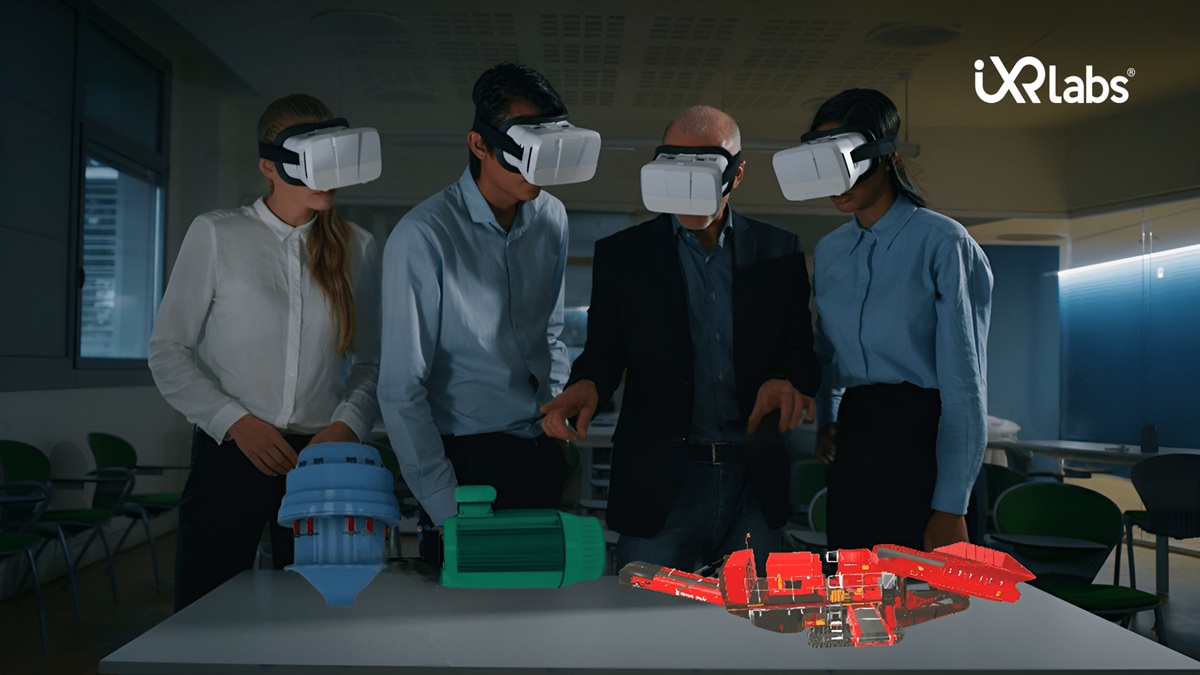Why Universities Should Invest in VR for STEM Education

Modern-day educators constantly seek innovative ways to engage our students and enhance their learning experiences, particularly in the challenging fields of Science, Technology, Engineering, and Mathematics (STEM).
The advent of Virtual Reality (VR) offers a transformative opportunity to elevate STEM education beyond traditional methods.
This blog will explore why universities should invest in VR for STEM education, highlighting its benefits, real-world applications, and compelling data that supports its adoption.
Challenges in Traditional Learning Approaches
Traditional teaching methods often struggle to captivate students' attention, especially in STEM disciplines where concepts can be abstract and complex.
According to a study by the National Science Foundation, the number of students failing lecture-based courses is 55% more than the ones learning actively. This lack of engagement can lead to decreased motivation and lower retention rates.
Embracing Educational Technology For STEM Learning
The integration of educational technology in STEM learning is essential for meeting the diverse needs of today’s learners. VR STEM education aligns perfectly with this need by providing immersive environments where students can explore concepts interactively.
By investing in VR technologies, universities can create dynamic learning experiences that cater to various learning styles and preferences.
A study from PwC found that learners using VR were 4 times more focused than their peers who learned through traditional classroom methods. This heightened concentration translates into better retention and understanding.
Additionally, research from the University of Maryland indicates that students who learn through immersive experiences retain information for up to 75% longer than those who learn through conventional methods.The Transformative Power of VR in STEM Education
Now, let us look at the qualitative benefits offered by VR technologies in the realm of STEM education-
Immersive Learning Experiences
One of the most significant advantages of VR is its ability to create immersive learning experiences. For example:
Simulated STEM Experiments: In a virtual chemistry lab, students can conduct experiments without the risks associated with hazardous materials. This not only enhances safety but also allows for repeated practice without resource constraints.
According to research from Iowa State University, it was found that 100% of welding students who utilized VR training performed better on weld testing compared to those receiving traditional training.
This is because of the “Multimodal” learning interface provided by immersive learning platforms. It is based on the theory of multiple intelligences- which combines all the modes of learning together, as in, kinesthetic, auditory, visual, etc.
Want to stay ahead in education? Learn how investing in VR can make your STEM courses more engaging and effective!
Engineering Simulations: Engineering students can use VR to visualize complex structures or systems, such as bridges or electrical grids. The students can tweak the variables and then take note of the outcomes under various circumstances.
For example, let us take the example of the simulated biology lab at the National University Of Singapore. NUS has launched the Virtual Reality in Agitation Management (VRAM) program.
This course allows medical and nursing students to learn how to handle patients experiencing stress, anxiety, and depression through immersive VR simulations. This program is designed to help students practice de-escalation techniques in a safe and controlled environment.
Enhancing Spatial Awareness and Problem-Solving Skills
Spatial awareness is crucial in many STEM fields. A study published in the Journal of Educational Psychology found that students who engaged with spatially oriented VR tasks showed a 40% improvement in spatial learning skills compared to their peers who used traditional methods.
This enhancement is particularly beneficial for disciplines like architecture and engineering, where understanding three-dimensional space is essential.
Use Cases of VR in STEM Education

Several universities have successfully integrated VR into their STEM curricula:
University of Illinois at Urbana-Champaign: Their engineering program utilizes VR simulations for structural analysis courses. Students can visualize stress points on structures, leading to deeper understanding and improved design skills.
Stanford University: In their biology department, students use VR to explore human anatomy interactively. This hands-on approach has resulted in a 25% increase in exam scores among participants compared to traditional study methods.
University of Southern California: The Viterbi School of Engineering employs VR for robotics courses, allowing students to simulate robot movements and test algorithms in a virtual environment before physical implementation.
Georgia Institute of Technology: Their computer science program incorporates VR for programming courses, enabling students to visualize code execution and debugging processes more effectively.
Purdue University: Through their virtual reality lab, students studying aeronautics can simulate flight scenarios, providing practical experience that enhances theoretical knowledge.
These examples illustrate how universities are leveraging VR technologies to address specific challenges within their STEM programs.
Bridging Theory with Practice
The integration of VR into STEM education aligns with several educational theories:
Constructivism: By allowing students to construct their understanding through interactive experiences, VR supports active learning principles.
One of the major advantages of this is that the learner becomes more sure of his thinking acumen and decision-making skills. Students using VR reported a 20% increase in confidence and self-efficacy towards learning after completing VR training courses.
Experiential Learning Theory: The hands-on nature of VR aligns perfectly with Kolb’s experiential learning cycle, promoting deeper engagement through direct experience. This was posited by many eminent educationists like John Dewey, David Kolp, and Carl Rogers.
Cognitive Load Theory: By breaking down complex concepts into manageable virtual scenarios, educators can help reduce cognitive overload among students.
Final Words
The potential for Virtual Reality in STEM education is immense. By investing in this innovative technology, universities can create engaging, interactive environments that foster deeper understanding and retention among students.
As educators committed to excellence and innovation, embracing VR enhances our teaching methodologies and prepares our students for a future where technological proficiency is paramount.




.png)
.png)